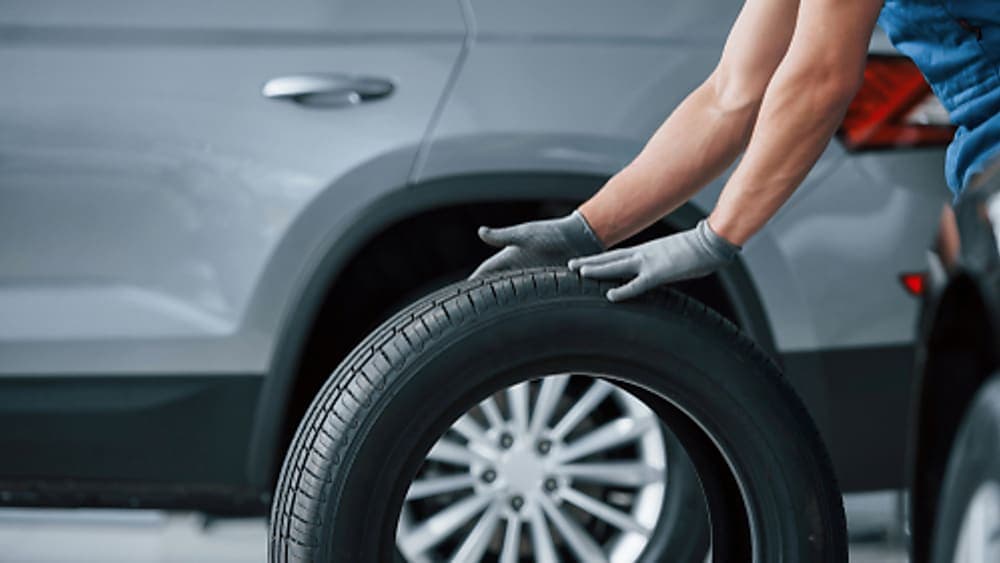Tire maintenance & safety
Best price guarantee
Tire replacement coverage
24/7 roadside assistance
Easy returns

Buying new tires is an investment in your vehicle's safety, performance, and longevity. To get the most out of your purchase, it's essential to understand the importance of proper tire care and maintenance.
Taking the time to care for your new tires can help you avoid costly repairs and replacements down the road. By following a few simple tips, you can ensure that your tires last as long as possible and perform at their best.
In this article, we'll explore the reasons why caring for new tires is so important and provide you with practical advice on how to keep your tires in top condition. From regular pressure checks to proper cleaning techniques, we've got you covered.
Why Care for New Tires?
New tires are a significant investment in your vehicle's safety and performance. Properly maintained tires provide better traction, handling, and braking, especially in adverse weather conditions like rain or snow.
Caring for your new tires also helps extend their lifespan, saving you money in the long run. Neglecting tire maintenance can lead to uneven wear, reduced fuel efficiency, and even premature tire failure, which can be dangerous and costly to replace.
On average, a set of new tires can last between 25,000 to 50,000 miles, depending on factors such as driving habits, road conditions, and vehicle type. By taking a proactive approach to tire care, you can maximize your investment and ensure that your tires reach their full potential lifespan.
How to Care for New Tires

Grasping the essentials of tire upkeep is crucial for ensuring optimal performance and durability. Consistent attention to tire maintenance goes beyond suggestions—it's a necessity. By establishing a routine focused on tire well-being, you’ll enhance driving comfort and safety.
Adopt these tire care practices to achieve the best outcomes. Measure tire pressure monthly with a dependable gauge when tires are cold—maintaining correct inflation boosts fuel efficiency and averts uneven wear; adhere to your vehicle's manual for the precise PSI. Rotate tires every 5,000 to 7,000 miles to promote uniform tread wear; adhering to the manufacturer's suggested rotation pattern yields the best results. Correct tire alignment after installation is imperative to prevent uneven tread wear and to maintain optimal handling.
Conduct regular inspections to spot any cuts, punctures, or uneven wear. Use a penny to check tread depth: visibility of all of Lincoln’s head indicates the need for replacement. Clean tires using mild soap and water with a soft brush to effectively eliminate debris without damaging the rubber—steer clear of harsh chemicals that could compromise tire integrity.
Adhering to these guidelines ensures your tires deliver dependable performance and safety during your travels.
1. Tire Pressure Checks
Tire pressure is a vital component of tire maintenance, affecting both safety and driving efficiency. Keeping your tires inflated to the right pressure prevents uneven wear and optimizes fuel economy. Under-inflated tires can overheat, while over-inflated ones can reduce contact with the road, affecting grip and comfort.
Invest in a reliable digital tire gauge for accurate readings. Check the pressure monthly, particularly when the tires are cool, to get the most accurate measurement. Before embarking on long journeys or carrying heavy loads, double-check the tire pressure to ensure it aligns with the vehicle manufacturer’s recommendations found in your owner’s manual.
Temperature fluctuations can alter tire pressure, which makes regular monitoring important throughout the year. Cold weather may cause a drop in pressure, while warmer temperatures might increase it. Adjust the tire pressure as needed to ensure your tires remain at the optimal pressure, enhancing their performance and longevity.
2. Tire Rotation Schedule
Regularly rotating your tires is a pivotal aspect of tire maintenance, promoting balanced wear across all tires. This practice not only optimizes the lifespan of your tires but also enhances overall vehicle stability and control. By ensuring each tire encounters different road conditions, you maintain a consistent tread depth, contributing to safer driving.
A typical guideline is to rotate your tires approximately every six months, or between oil changes. However, always refer to your vehicle's manual to determine the recommended rotation pattern specific to your car's drivetrain—be it front-wheel, rear-wheel, or all-wheel drive. Following the manufacturer's advice ensures that your tires wear evenly, adapting to the unique demands of your vehicle.
For a comprehensive tire check-up during rotation, consider having a professional assess the wheel alignment and balance. Proper alignment ensures wheels are correctly positioned, which helps prevent uneven tread wear and improves handling precision. Maintaining a correct balance minimizes vibrations, which can lead to premature tire wear and discomfort during driving.
3. Tire Alignment After Installation
After fitting new tires, verify wheel alignment to ensure optimal vehicle performance and safety. Misalignment can cause tires to wear unevenly, impacting their longevity and affecting how the vehicle drives. Signs like the car veering to one side or experiencing a shaking steering wheel at speed may indicate the need for an alignment check.
Alignment services ensure the wheels are set to precise angles, enhancing road contact and driving comfort. This adjustment minimizes tire wear, improves steering accuracy, and maximizes fuel efficiency. Regular alignment checks are prudent, especially following impacts with potholes or curbs, to maintain alignment integrity.
During an alignment service, technicians focus on camber, caster, and toe settings. These angles determine how the tires interact with the road and contribute to balanced tread wear. By maintaining these settings, you help ensure your new tires function effectively, offering a safe and smooth ride.
4. Tire Inspection Checklist
Routine tire inspection is a proactive measure to ensure your safety and extend the life of your tires. Begin by closely examining each tire for signs of damage. Look for any visible abnormalities on the surface or along the sidewalls, such as bulges or embedded objects, which could indicate potential issues that need addressing.
For assessing tread depth effectively, consider using a tread depth gauge for precise measurements. This tool provides a clear indication of whether your tires still have sufficient tread to deliver safe traction. Regularly checking tread depth helps you maintain optimal grip, particularly in challenging driving conditions.
Another critical aspect of inspection is identifying any signs of uneven tread wear. Gently run your hand across the tire surface to detect any inconsistent wear patterns, which might suggest misalignment or other mechanical concerns. Regular inspections help catch problems early, ensuring your tires perform efficiently and safely.
5. How to Clean Tires
Keeping your tires clean not only boosts their visual appeal but also aids in their maintenance. Start by using a hose to gently rinse away loose dirt and surface debris. This step is essential to prevent any gritty particles from scratching the tire's surface during the cleaning process, thus safeguarding the rubber.
For a thorough clean, opt for a mixture of warm water and a few drops of gentle dish soap. Use a soft-bristle brush to scrub both the sidewalls and the tread, focusing on areas where dirt and grime tend to build up. This method effectively lifts stubborn residues without compromising the tire's structure or its inherent properties.
After scrubbing, rinse the tires thoroughly to ensure all soap is removed, then dry them with a clean, soft cloth to prevent water spots. Steer clear of using strong chemicals or petroleum-based cleaners, as these can deteriorate the rubber, leading to premature aging and cracking. Regular cleaning combined with mindful care ensures your tires remain in peak condition and performance-ready.
Tips on Maximizing Tire Longevity

1. Regular Inspection
Make tire inspections a regular practice to ensure your tires are in top condition. Pay attention to any unusual wear patterns, bulges, or foreign objects lodged in the treads. Early detection of such issues can prevent more significant problems and extend the life of your tires. By incorporating these checks into your routine, you maintain the safety and performance of your vehicle, ensuring reliable traction and handling across various driving conditions.
2. Consistent Maintenance
Establishing a routine that includes consistent maintenance tasks is vital for preserving tire longevity. This means not only keeping up with pressure checks but also scheduling regular professional inspections to catch misalignments or imbalances early. Such diligence in maintenance reduces the likelihood of uneven tread wear and promotes a more efficient, safe driving experience. By maintaining this level of care, you enhance fuel efficiency and ensure your tires deliver optimal performance over their lifespan.
Caring for your new tires is essential to ensure they last as long as possible and perform at their best. By following these tips and establishing a regular maintenance routine, you can maximize your tire investment and enjoy a safer, more comfortable driving experience. When you're ready to shop for new tires, let us help you find the best deals online – we're here to make the process simple and affordable.
Ready to find the perfect tires?
Search By